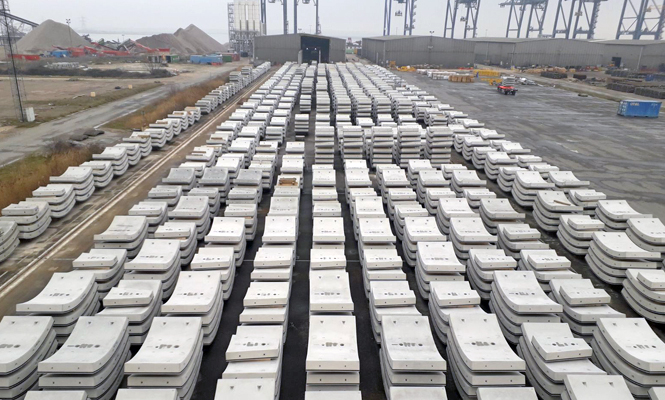With these lines we intend to clarify two similar concepts that tend to be confused in our sector: precasting/prefabrication and industrialization.
If we look up the term "prefabrication" in the Cambridge Dictionary, we are referred to the verb "prefabricate", whose definition is: "Manufacture sections of (a building or piece of furniture) to enable quick assembly on site". Furthermore, we can also use the adjectives “prefabricated”, “prefab” or “precast” for structures or elements that are manufactured in this way.
Therefore, when we carry out a precast construction project, in the final location we only perform the assembly of the previously manufactured pieces. Obviously, there may be projects with a higher or lower degree of precasting, and this degree of precasting is inversely proportional to the waste generated on site: the more waste, the less prefabrication.
Unfortunately, the term precasting brings with it a negative concept, since the derogatory connotation of being something temporary is internalized, especially as regards building construction projects. In civil engineering, we believe this negative concept has already been overcome and currently nobody considers as temporary a bridge which has been made with precast beams and precast floor plates, and whose deck is statically indeterminate, with a variable depth and 40 m spans.
This situation is totally unfair, as in general terms the higher the degree of precasting that a project has, the more quality and safety control it can reach.
The term industrialization is more broadly included in dictionaries and it may be defined as the production process that uses materials, means of transport and serially machined techniques in a rational and automated way to achieve greater productivity.

Once we are clear about the classic meaning of the two terms, I think we will agree on how questionable it is to handle concepts like the following:
- Bespoke prefabs: This can only make sense when there are a great deal of pieces to be prefabricated.
- On-site prefabricated/precasting constructions: This could be acceptable when transport costs are greatly reduced.
- Prefabricated/precasting singular structure: This clashes with the idea that it should be a structure that is to be repeated in several different works, not unique.
PACADAR, the longest-standing company in the world engaged in the use of precast prestressed concrete elements, has based its successful international expansion strategy precisely on the reinterpretation of the old concepts of precasting/prefabrication and industrialization:
- Our market is the world.
- Our projects are those which are sized such that they allow us to amortize the installation in the immediate vicinity of a factory that minimizes transport costs.
- Our products are what our client requires, and if they are not as repetitive as needed to be manufactured in conventional moulds, we design versatile moulds in which a great diversity of pieces can be manufactured.
Practical examples of this reinterpretation of the classic precast concrete business are our factories in London, Kuwait City and Panama.